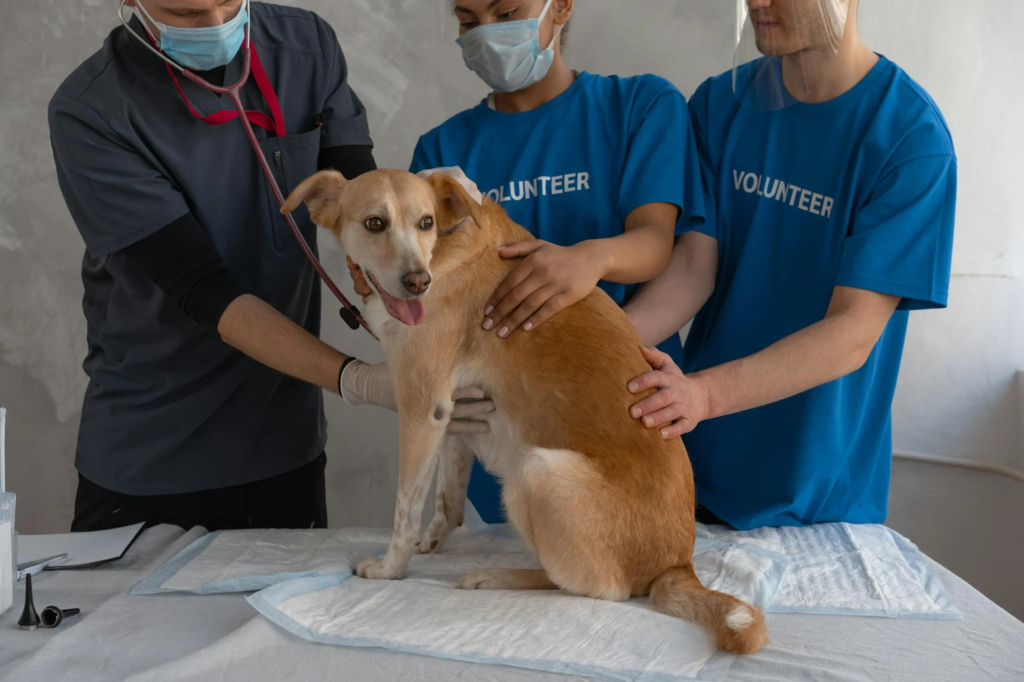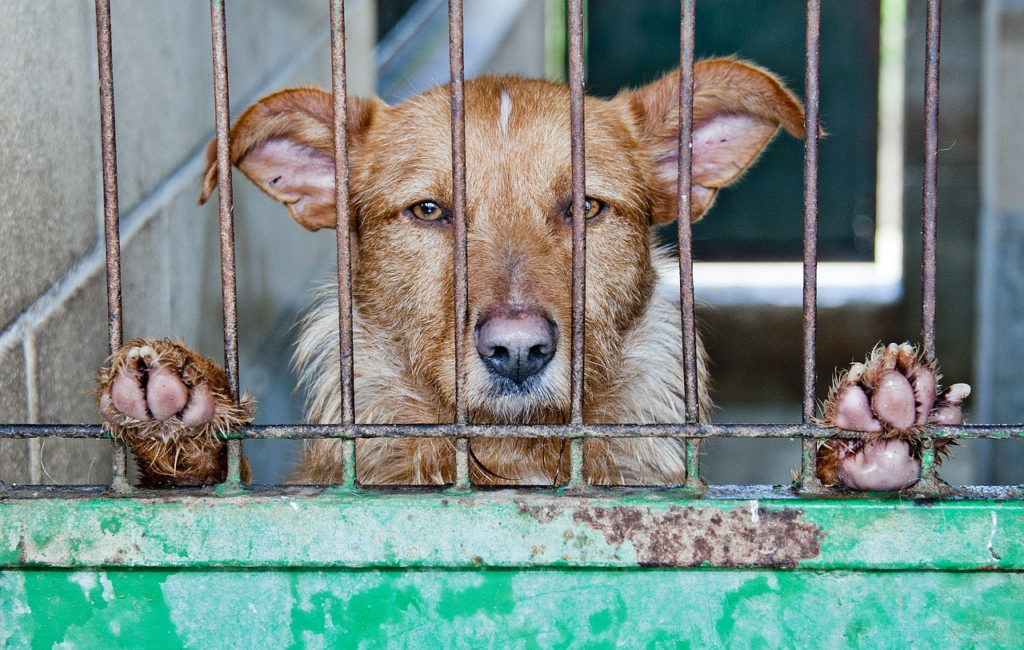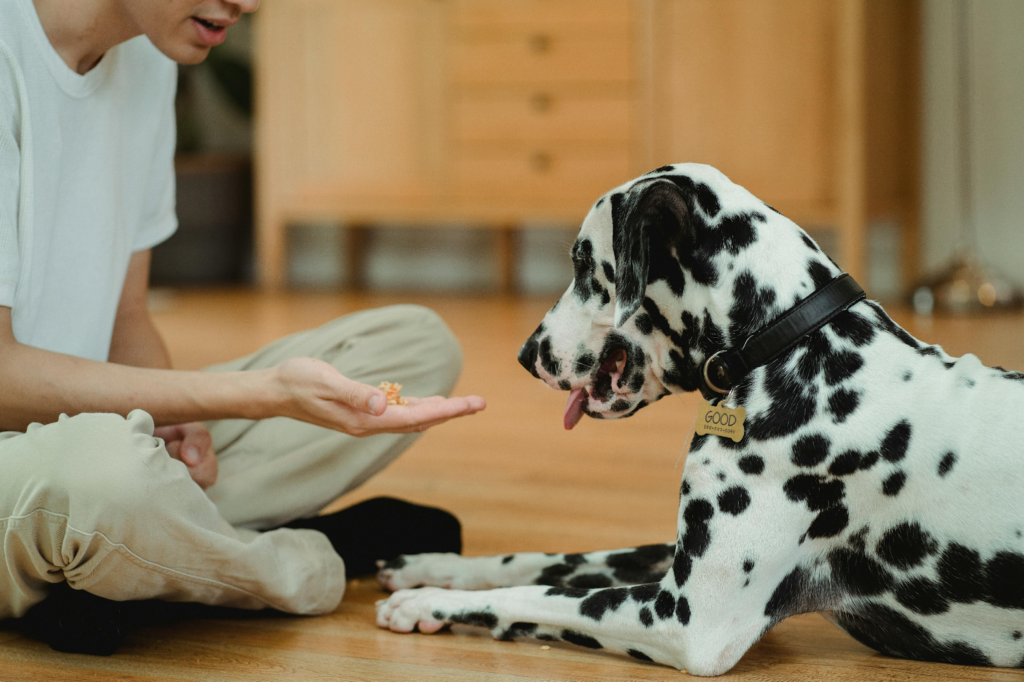1. Aggression Toward Other Animals

One of the most important red flags to watch for when adopting a dog is signs of aggression toward other animals, especially if you already have pets at home. If a dog shows signs of excessive hostility, such as growling, lunging, or snapping at other animals, this can be a warning sign that the dog may struggle with socialization. Aggressive behaviors can be a result of past trauma, lack of proper training, or simply a mismatch in temperament. While some dogs can be trained to get along with other pets, these behaviors often require time, patience, and specialized behavior modification. It’s crucial to assess whether you’re prepared to invest the time needed to address these issues, as it can sometimes take longer than expected for a dog to adapt. Additionally, if you’re adopting a dog from a shelter, their background and history with other animals might not be entirely clear. This is why observing the dog’s behavior with other animals, during both calm and exciting moments, is key. If the aggression is more than minor, it could lead to more severe issues down the road, potentially endangering other pets and yourself. Be sure to discuss any observed aggression with the adoption center, and ask if the dog has any history of conflicts with other animals. It’s also important to consider whether you have the resources to manage these issues, as they may involve more than just training—sometimes medical or behavioral assessments are needed. If aggression is a common theme, it might be best to keep looking for a dog whose temperament aligns better with your household dynamics.
2. Fear of People

A dog that shows an overwhelming fear of people can pose challenges to your household. If a dog cowers, hides, or exhibits anxiety every time a person approaches, it could be a sign of past abuse or a lack of proper socialization during its critical developmental stages. While some fearful behaviors can be overcome with patience, training, and positive reinforcement, this process can take months, and in some cases, years. Dogs that are fearful of people may also display defensive behaviors such as growling, snapping, or avoiding eye contact. Fear-based aggression can be particularly concerning because it can manifest unpredictably, especially if the dog feels cornered or threatened. If you’re adopting from a shelter, ask if the dog has shown signs of fear aggression in the past and if there have been any successful interventions. Fearful dogs often need specialized training, and while many can overcome their anxiety, it can take a significant amount of time and energy. Additionally, if you have children or frequent visitors to your home, a fearful dog may not be a good match due to the high stress they may experience in social situations. Even if you’re willing to put in the time, consider whether you’re equipped to handle the situation emotionally and logistically. If you’re new to dog ownership or have a busy household, a more social, confident dog may be a better fit. Ultimately, the well-being of both you and the dog should be your top priority.
3. Health Issues That Aren’t Addressed

When adopting a dog, it’s crucial to assess whether the dog’s health has been properly addressed by the shelter or adoption agency. If the dog has untreated medical conditions such as skin infections, parasites, or issues with mobility, this could be a major red flag. Some shelters may not have the resources to treat medical conditions, and if the dog’s health concerns are severe or chronic, they could become a financial burden or require extensive care. Even minor health issues, like flea infestations or ear infections, can escalate if left untreated and impact the dog’s quality of life. Make sure to ask about the dog’s veterinary history and whether they’ve been spayed or neutered, vaccinated, or had regular check-ups. Health problems might also be a result of poor living conditions or lack of proper care, which can affect the dog’s behavior, potentially causing anxiety or fear-based reactions. If the dog has a history of serious health problems, it’s important to determine whether you’re prepared for the potential costs and commitment involved in treating them. Additionally, some health problems may not be immediately visible, so it’s important to ensure that the dog has been thoroughly checked by a vet before adoption. Without addressing these concerns, you might end up facing more difficult challenges down the road. Be sure to discuss the dog’s health records with the adoption center and consider the resources you have available to care for a dog with medical needs.
4. Overly Destructive Behavior

While some destruction is common for young dogs or dogs going through a transition period, excessive destruction of furniture, shoes, or household items can be a warning sign. Dogs may chew, dig, or destroy items in an attempt to alleviate boredom, anxiety, or frustration. However, when a dog’s destructive behaviors are frequent and severe, it might indicate underlying issues such as separation anxiety, lack of proper training, or a behavioral disorder. A dog that consistently destroys items may be expressing distress or discomfort, which may require professional behavior intervention to resolve. If the destruction is related to anxiety or stress, it may take time to help the dog feel secure in their new environment. Excessive chewing and digging can also be signs of a lack of physical exercise or mental stimulation. If you’re adopting a dog that shows signs of destructive behavior, make sure to inquire whether the dog has been evaluated for any anxiety-related issues and if they have undergone training. Consider whether you’re prepared to invest time into training and enrichment activities to alleviate these behaviors, as they can worsen if not addressed. If you’re unable to devote the necessary time and resources, this could lead to more challenges in the future. A dog with severe destructive tendencies might not be the best fit for families with young children, busy schedules, or limited space for activity.
5. Lack of Socialization

A lack of proper socialization can manifest in a dog being fearful or overly aggressive towards strangers, other animals, or unfamiliar environments. Socialization is a key factor in a dog’s ability to thrive in a household, as it helps them develop the confidence to interact appropriately with both people and other animals. A dog that hasn’t been socialized properly may react with fear, barking, or aggression toward new situations, which can be stressful for both the dog and their owners. While many dogs can be socialized later in life, it often requires patience and a gradual, positive approach to build trust. If you’re adopting an older dog that has missed key socialization experiences, it may be more difficult to undo these behaviors, and it could take months of dedicated training. Some dogs may never fully adjust to new people or environments, which could make them difficult to live with, especially if you have other pets or small children in the home. If you’re looking for a dog that integrates easily into your lifestyle, consider whether the lack of socialization is something you can work through. Some shelters will provide information about the dog’s socialization history, and you should ask about their experiences with other animals, children, and different environments. If the dog struggles with socialization, it’s important to determine whether you’re prepared to take on the responsibility of extensive training and social exposure.
6. Excessive Barking or Whining
Excessive barking or whining can be a sign of anxiety, fear, or frustration. While some dogs are naturally more vocal than others, if a dog constantly barks or whines for no apparent reason, this could be a sign of underlying behavioral issues. Dogs may bark excessively when they feel lonely, bored, or stressed, and this can lead to strained relationships with neighbors or family members. If you’re considering adopting a dog that exhibits this behavior, it’s essential to ask the shelter if they’ve tried any training methods or interventions to curb excessive barking. In many cases, barking or whining can be alleviated with proper training, consistent routines, and mental stimulation. However, if the barking is persistent, it may be a sign of separation anxiety or other behavioral disorders that could be harder to treat. If you’re living in an apartment or have close neighbors, an excessively vocal dog may not be the best match. Make sure to assess the dog’s behavior and determine whether you’re prepared to invest in training and behavior modification. Dogs that bark excessively can sometimes be redirected with exercise, enrichment, or calming products, but it often requires patience and consistency.
7. Unusual Fear or Nervousness

If a dog seems overly fearful or nervous, especially in situations where they should be relaxed, it can be a sign of past trauma or inadequate socialization. Dogs that are excessively nervous may have trouble adjusting to new environments, new people, or even everyday household routines. This fearfulness can lead to stress-related behaviors, including avoidance, hiding, or even aggression. While some dogs can learn to overcome their fears with gradual exposure and positive reinforcement, it’s important to recognize the extent of the anxiety before deciding to adopt. A dog that is constantly fearful may also experience difficulty bonding with you or adjusting to its new home. If the dog displays signs of nervousness or fear in common situations, such as during car rides, when meeting new people, or when encountering loud noises, it may require significant time and care to address these issues. It’s important to consider whether you have the time, patience, and experience to help a dog overcome these fears. For some dogs, fear-based behavior can be long-lasting and difficult to resolve, so it’s important to be realistic about what you’re willing and able to manage.
8. Previous History of Abuse or Neglect

A history of abuse or neglect can leave lasting emotional and physical scars on a dog, making them more difficult to care for. Dogs that have been abused or neglected may display fearful, aggressive, or destructive behaviors, which can take time to work through. These behaviors are often deeply ingrained and may require extensive rehabilitation. If you’re adopting a dog with a history of abuse, it’s essential to work with professionals who can guide you in the healing process. Many dogs from abusive or neglectful situations have not had proper training, socialization, or positive human interactions, which can make them more prone to anxiety and fear. These dogs often need a patient, understanding owner who is prepared to help them regain trust and confidence. While these dogs can make incredible recoveries with the right care, it’s important to understand the emotional baggage they may carry and whether you are prepared for the commitment required to help them heal. Ask about the dog’s history and any known instances of trauma, and discuss any specific behavioral concerns with the adoption center to ensure that you’re prepared to meet the dog’s emotional needs.
9. Unexplained Lethargy or Low Energy

If a dog seems unusually lethargic or low energy, this could be a red flag for health issues. While some dogs are naturally laid-back, significant lethargy could indicate underlying medical conditions such as infections, arthritis, or even heart disease. If you notice that a dog lacks enthusiasm for play, exercise, or even basic activities like eating or walking, it’s important to investigate further. Lethargy in a dog can sometimes be a sign of depression or emotional distress, especially if the dog is adjusting to a new home or family. However, persistent lethargy should always be checked out by a vet to rule out any physical health problems. Dogs that are overly tired or lack energy may also have trouble adjusting to an active household or long walks. If the lethargy is related to medical issues, it may require immediate attention and treatment, which could be costly or require a long recovery period. Make sure to ask about the dog’s health history and whether any tests or treatments have been done before adopting. If the dog is simply adjusting to a new environment, some time, patience, and proper care may help, but it’s important to consider all possibilities.
10. Unwillingness to Engage or Interact

A dog that is unwilling to engage or interact can indicate that something is not right. While some dogs are naturally more independent, many dogs look to their owners for companionship, affection, and interaction. If you’re adopting a dog that shows little interest in playing, being petted, or engaging with family members, it could be a sign of depression or previous trauma. A lack of interest in bonding can make the transition to a new home much more difficult and may require additional time and patience to help the dog feel comfortable. Dogs that don’t engage often struggle to form bonds with their new owners, which can be a sign of emotional distress or fear. If you notice that a dog is reluctant to engage with toys, treats, or even people, it might be dealing with unresolved anxiety or depression. Such issues may take a long time to address, especially if the dog has experienced neglect or a lack of positive human interaction in the past. Additionally, dogs that don’t engage may also be showing signs of health problems, such as pain or discomfort, which could prevent them from participating in normal activities. This lack of interaction can be frustrating for first-time dog owners, especially if they were hoping for an active, playful companion. Before adopting a dog that shows little interest in engagement, ensure that you’re ready for the extra care and patience it might take to help the dog feel at ease.
11. Chronic Scratching or Skin Issues
Chronic scratching or persistent skin issues in a dog can be a red flag that requires attention. While minor itching can be normal, if the scratching becomes frequent and intense, it may indicate an underlying issue such as allergies, parasites, or an untreated skin infection. Dogs that are constantly scratching or licking at themselves could be suffering from flea infestations, food allergies, or environmental irritants. These conditions can lead to serious skin damage if left untreated, including sores, hot spots, or hair loss. When adopting a dog, ask about any history of skin issues or allergies and whether they have been treated. If a dog is constantly scratching or biting at their skin, it can be a sign that they are in pain or discomfort, which could interfere with their ability to adjust to a new home. Skin conditions may also be a sign of poor overall health or lack of proper care. Depending on the severity of the skin problem, treatment may be expensive, time-consuming, and require long-term care. Additionally, if the dog has a history of chronic skin issues, it’s important to understand whether they are manageable with proper treatment or if they could become an ongoing challenge. Before adopting, ensure that the dog’s skin issues are thoroughly addressed, as they may be a significant concern in the long term.
12. Excessive Shedding or Poor Coat Condition
Excessive shedding or a poor coat condition is often a sign that a dog is not in optimal health. While all dogs shed to some degree, extreme shedding combined with a dull or patchy coat could point to nutritional deficiencies, stress, or skin problems. Dogs with an unhealthy coat may also have a weakened immune system or other underlying health conditions that prevent their fur from growing properly. If you notice that a dog’s coat is thin, dry, or full of mats, it could be a red flag that they have been neglected or improperly cared for in the past. Poor coat condition can also indicate flea infestations or parasitic infections that can lead to more serious health concerns if not addressed. Additionally, some breeds naturally shed more than others, but if the shedding seems abnormal or excessive, it’s worth investigating further. A dog with a healthy coat usually has shiny, smooth fur, and regular grooming is important to maintain its condition. When adopting, make sure to ask about the dog’s grooming routine, whether they have any known allergies or sensitivities that could affect their coat, and if there are any steps being taken to address the shedding or poor coat. If you’re not prepared for the additional effort required to care for a dog with grooming issues, this may not be the right match for your home. Dogs with coat problems may also require specialized shampoos or treatments, which can be an added responsibility for new pet owners.
13. Overeating or Underfeeding

A dog that either overeats or refuses to eat can be a major red flag when adopting. Overeating can lead to obesity, which brings with it a host of health issues, including joint problems, heart disease, and a shortened lifespan. If a dog is constantly eating or begging for food, it could indicate an unhealthy relationship with food, either due to past neglect, lack of proper portion control, or underlying health problems. On the other hand, a dog that underfeeds or refuses to eat can also be a cause for concern, as it may be a sign of stress, illness, or dental problems. Dogs that have experienced neglect or inconsistent feeding habits in the past may struggle with these behaviors, making it important to assess their eating habits before adopting. A dog’s appetite can also be affected by changes in their environment, such as a move to a new home or a stressful transition period. If you notice that the dog is exhibiting signs of unhealthy eating behavior, it’s important to ask the adoption center if there are any medical or behavioral issues at play. Overeating or underfeeding can lead to serious complications down the road, and it’s essential to ensure that the dog is on a balanced and nutritious diet. A veterinarian can help assess the dog’s health and determine if there are any underlying issues affecting their eating habits. Proper nutrition is essential for a dog’s overall well-being, and any signs of irregular eating behavior should be addressed promptly.
14. Unresponsive to Training
If a dog shows little to no responsiveness to basic training commands, it could signal a lack of discipline or previous poor training. While some dogs take longer to pick up commands or behaviors, an unresponsive dog may have more significant behavioral challenges. Dogs that are difficult to train may have been neglected in terms of socialization or have learned bad habits in the past. While all dogs can be trained with patience and consistency, a dog that is consistently unresponsive to basic commands like “sit,” “stay,” or “come” could require more intensive training. If a dog is not responding to positive reinforcement, it might be a sign that they have not been exposed to proper training techniques or have developed behavioral problems. Some dogs may also have difficulty with training due to anxiety, fear, or a lack of motivation, which may require a professional trainer to address. If you’re adopting a dog and it shows signs of being unresponsive to training, ask the shelter or adoption center whether they’ve worked with the dog on training. Some behavioral issues can be worked through, but it’s important to understand whether you’re willing to dedicate the time, energy, and resources necessary to teach the dog proper behavior. A dog that struggles with training may become frustrated or exhibit more undesirable behaviors if not handled correctly. Make sure to assess whether you have the skills and time to dedicate to a dog that might need extra help in learning the basics.
15. Lack of Potty Training

A lack of potty training is another red flag to watch for when adopting a dog. Dogs that have not been properly housetrained may frequently have accidents inside the house, which can be frustrating for pet owners. While puppies are still learning to control their bladder, adult dogs that consistently have accidents inside can be a sign that they either haven’t been trained or that they’re experiencing anxiety or health issues. If a dog has not been housetrained, it can be a time-consuming and difficult task to teach them proper potty habits. Some dogs may need a structured routine, consistent positive reinforcement, and a clear understanding of where they are supposed to go. If a dog has been rescued from a shelter or has had a difficult past, it may have developed bad habits related to potty training due to stress, poor living conditions, or lack of supervision. It’s important to ask the adoption center whether the dog has been successfully potty trained or if there are ongoing challenges. While many dogs can eventually be trained with patience, it’s important to assess whether you’re ready to take on this responsibility. Dogs that struggle with potty training may need extra supervision, crate training, or special accommodations, and if you’re not prepared for the time and effort required, this could lead to frustration. A lack of potty training may not only be an inconvenience but could also indicate other underlying behavioral issues that need to be addressed.


